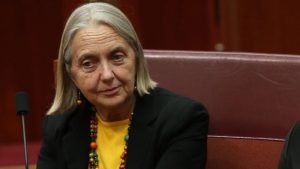
I have a few kangaroos loose in my top paddock. That’s not supposed to be a metaphor for a loose grip on sanity although I know some will see it as a predictable conformation.
No. I really do have Eastern Grey Kangaroos hopping past my home. I often sit outside with a cup of coffee and watch them go by.
Occasionally the big males will jump the fence and find themselves caught inside what is not much bigger than a suburban backyard, so I leave the gates open and eventually they make their own way out. Besides scaring the hell out of the cats, they do no harm and the family enjoys their random appearances.
While hardly a scientific basis for a census, I have noticed numbers of the Eastern Grey Kangaroos on the rise around my little part of regional Australia. My rough guesswork appears to be supported by the International Union for Conservation and Nature which puts Australia’s kangaroo population — Red, Western Grey, Eastern Grey and Walleroo (the four kangaroo genera that are harvested commercially) rising from 43 million in 2002 to 44 million in 2014.
Not that you’d know that if you read the New York Times which, after the US release of the film Kangaroos: A Love-Hate Story, has continued its head scratching on the Australian psyche which might otherwise be called “How appalling Australians are.
In this case the stereotyping has shifted to that of a nation of slavering drunks with their pig dogs blasting away with their shotties at doe-eyed kangaroos.
In a review of the film, the NYT claimed kangaroos were considered a pest by “farmers and ranchers.” What, no wranglers?
According to the NYT reviewer, Ken Jaworowski, the filmmakers offered up “images of the outback and drone footage of wild animals in their habitats” which were both “breathtaking” and designed to avoid a “non-stop focus on bloodshed.” But Jaworowski gave them two thumbs up for not flinching “from stomach-turning sights.” The review concludes, “The film isn’t pretty but its message is necessary.”
The film, as it turns out, isn’t very honest either. Critics say it fails any test of objectivity and veers directly into the polemical. But no matter, Mr Jaworowski falls into the category of believing everything he sees and more than half of what he hears without question or so it would seem.
Fortunately, other US film reviews are not so easily convinced about Kangaroo: A Love-Hate Story and have observed a sharp lack of objective facts and an unwillingness by the filmmakers to get more than one side to the a story.
I wouldn’t mind clocking the production budgets and the source of the film’s funding especially. For what it’s worth, the filmmakers claim the film was independently funded but the film’s talking head experts come from a collective of animal rights activists known bizarrely as THINKK, a group formerly based at the University of Technology Sydney and funded by animal protection charity Voiceless.
Their claims have been challenged and described as “misleading” by actual experts.
It comes as no surprise that Greens senator and spokesperson on animal welfare, Lee Rhiannon, has headed off to Europe to help launch the film. Already some of Europe’s politicians have talked about a ban of kangaroo meat based on the film’s bloody depictions and the senator shows no sign of sticking up for the $200 million industry which employs 2000 people, many of them indigenous Australians.
Rhiannon as usual cleverly avoids hard facts, preferring to doubt the data that exists in the scientific and government sectors, and opting for her own dubious assumptions.
“The commercial shooting of kangaroos is linked with serious contamination and cruelty issues,” Rhiannon said. “The fact that Russia has suspended imports of kangaroo meat three times demonstrates that there is a problem with how the Australian government is managing the commercial kangaroo industry.”
The more cynical among us might conclude that Rhiannon believes the Russians haven’t put a foot wrong since 1919 with the possible exception of Mikhail Gorbachev’s perestroika.
Russia’s reasons for suspending the import of kangaroo meat have been nominally over e. coli contamination of kangaroo meat which is odd because the meat is tested in Australia before it is packed and shipped off. On the second occasion, the suspension occurred just three months after Malaysian Airline flight MH17 was blasted out of the air. In Russia, trade and grubby politics go hand-in-hand.
Famine is inevitably driven by human factors. Name any famine in the 19th or 20th centuries and I’ll show you how dirty politics was the root cause. Crops fail, droughts occur, sure, but there is always a human being or beings that have put the preconditions for famine in place.
Much has been written regarding Rhiannon’s perceived attachment to Soviet Russia and Stalin’s failed policies which brought one of the great famines of the 20th Century into harsh reality. Arthur Sinodinos described Rhiannon as a “neo-Stalinist” in the Senate.
If she was a banner waver for the awful politics which created that huge chunk of human misery, she is now recklessly and actively pursuing another, an animal famine on this occasion that in the absence of a humane cull, would lead to an explosion of the kangaroo population and necessarily the starvation and deaths of millions of kangaroos.
All in the name of Lee Rhiannon’s fruity version of humanity.
This article was first published in The Australian on 9 March 2018.

Not content with holding gun to the heads of working poor the NRA ( National Retailers Assoc.) wants a wage freeze and more access to migrant workers even though youth unemployment and underutilisation are at record highs. Migrant arrivals have hit all time highs in January. the coalition government also want no pay rise. That is of course after turnbull gave his staff a 13% pay rise late last year.
https://tinyurl.com/yb2co7q5